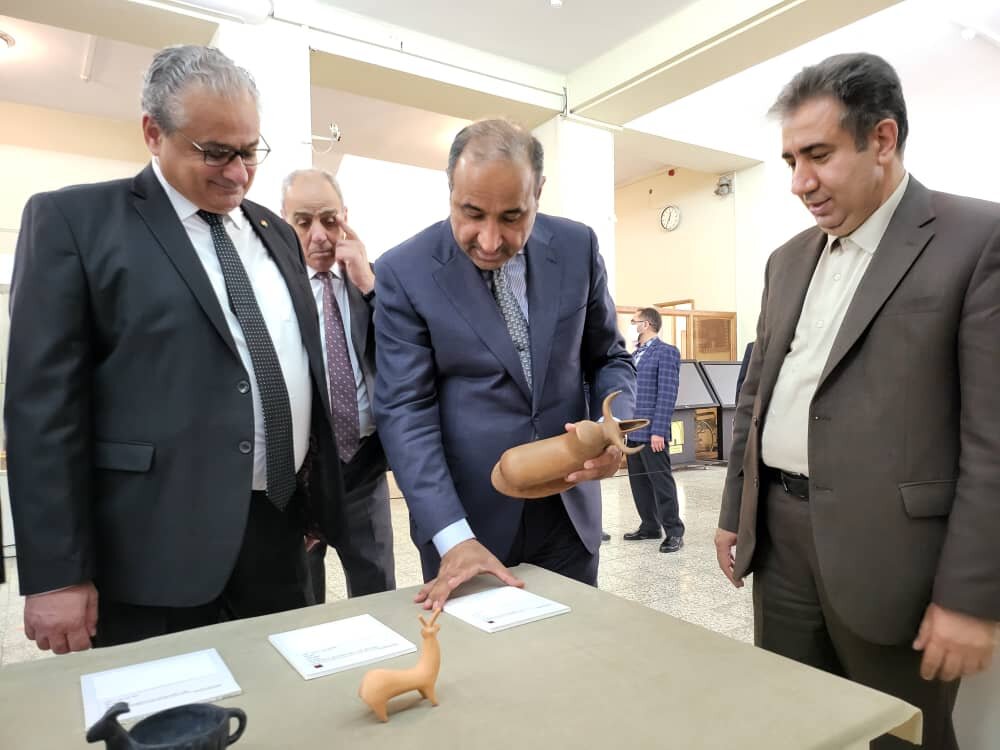Iraqi minister visits National Museum of Iran

TEHRAN - On Sunday, Iraqi Minister of Culture, Tourism, and Antiquities Hassan Nazim paid a visit to the National Museum of Iran, which is chock-full of priceless objects showcasing the juicy history of the nation.
Headed by a cultural delegation, Nazim was accompanied by the museum director Jebrael Nokandeh, and Mohammad-Ali Kiani, who presides over the Iranian-Foreign Affairs Cooperation of the Organization of Islamic Culture and Communication.
“Their visits began with the historic galleries of the Ancient Iran Museum and many details were presented to the guests by Firoozeh Sepidnameh, director of the museum,” a museum official told the Tehran Times on Sunday.
At the end of the tour, the Iraqi minister visited the exhibition "Touch of History" for blind visitors and read about the exhibition of models of historical and cultural artifacts.

The Museum of Archeology and Art of the Islamic Period of Iran was the second museum that was visited by the Iraqi delegation.
At the end of the visit, Nokandeh presented a series of museum publications to the Iraqi minister.
The National Museum showcases ceramics, pottery, stone figures, and carvings, mostly taken from excavations at Persepolis, Ismail Abad (near Qazvin), Shush, Rey, and Turang Tappeh to name a few.
The main structure of the museum, designed by French architect André Godard and completed in 1928, is one of the more attractive modern buildings in Tehran, blending Sassanian principles such as the grand iwan-style entrance with art deco–style brickwork.
Various relics from Susa and Persepolis, such as a stone capital of a winged lion, delightful pitchers, and vessels in animal shapes, colorful glazed bricks decorated with double-winged mythical creatures constitute highlights of the museum.
Exhibits from Persepolis include a magnificent human-headed capital, a cuneiform inscription proclaiming the might and godly affinity of Xerxes, and a striking frieze of glazed tiles from the central hall of the Apadana Palace. Also on display are a famous trilingual inscription from the time of Darius I, a bull-headed capital and carved staircase, a statue of a sitting dog that looks like it was carved just weeks ago, and four foundation tablets inscribed in cuneiform.
Another startling exhibit may be the natural mummy of a Salt Man who was entrapped in a salt mine in the 3rd or 4th century CE.
AFM
